
The artificial Intelligence expanse has trespassed beyond the bounds of the industrial and global business panorama. It has left no stone unturned to impact these industries in impactful ways. A gazillion industries have been on the threshold of adopting Artificial intelligence across their business domains. Powerful machine learning models and smart AI chatbots have been deployed to diverse business use cases that can guarantee an astounding success rate.

With such massive adoption rates envisioned for worldwide businesses; it becomes essential to attend to AI Transparency with greater thrust on its mandate adoption. Designing appropriately equipped AI models that can guarantee long-term success is the task of an efficient AI scientist or an ML engineer. Gaining sheer competence in AI can be the right start to a thriving career trajectory. Among many others, the new on the block is AI Transparency. This blog targets the core of this extremely powerful nuance and what role it plays in the business arena worldwide. Dive right in!
What is Transparency in Artificial Intelligence?
AI Transparency is the openness and visibility of how artificial intelligence systems work, including their design, data, and operations. It involves sharing detailed information about the AI’s development process, the data it uses for training, how it functions, and how it is deployed. The same is guided for transparency in Generative AI. Building trust in Generative AI commands prioritizing transparency at every stage of the AI lifecycle to provide meaningful explanations for the decisions and outputs they produce.
What makes AI Transparency Adoption Crucial for Businesses?
Believing Zendesk CX Trends Report 2024, a whopping 75% of organizations believe that a lack of transparency could lead to customer churn; the AI transparency landscape is beyond critical for business success. As AI as a Service (AIaaS) providers make AI technology more accessible to businesses, ensuring AI transparency is more critical than ever. Public trust, disclosure, and transparency are necessary governing ethics for AI technologies. AI users must build rigorous explainability processes and methods as those failing to comply with them shall lenders to adopt flawed opaque AI that could threaten consumers, instill discrimination, and pose a threat to the safety of the financial system as well.
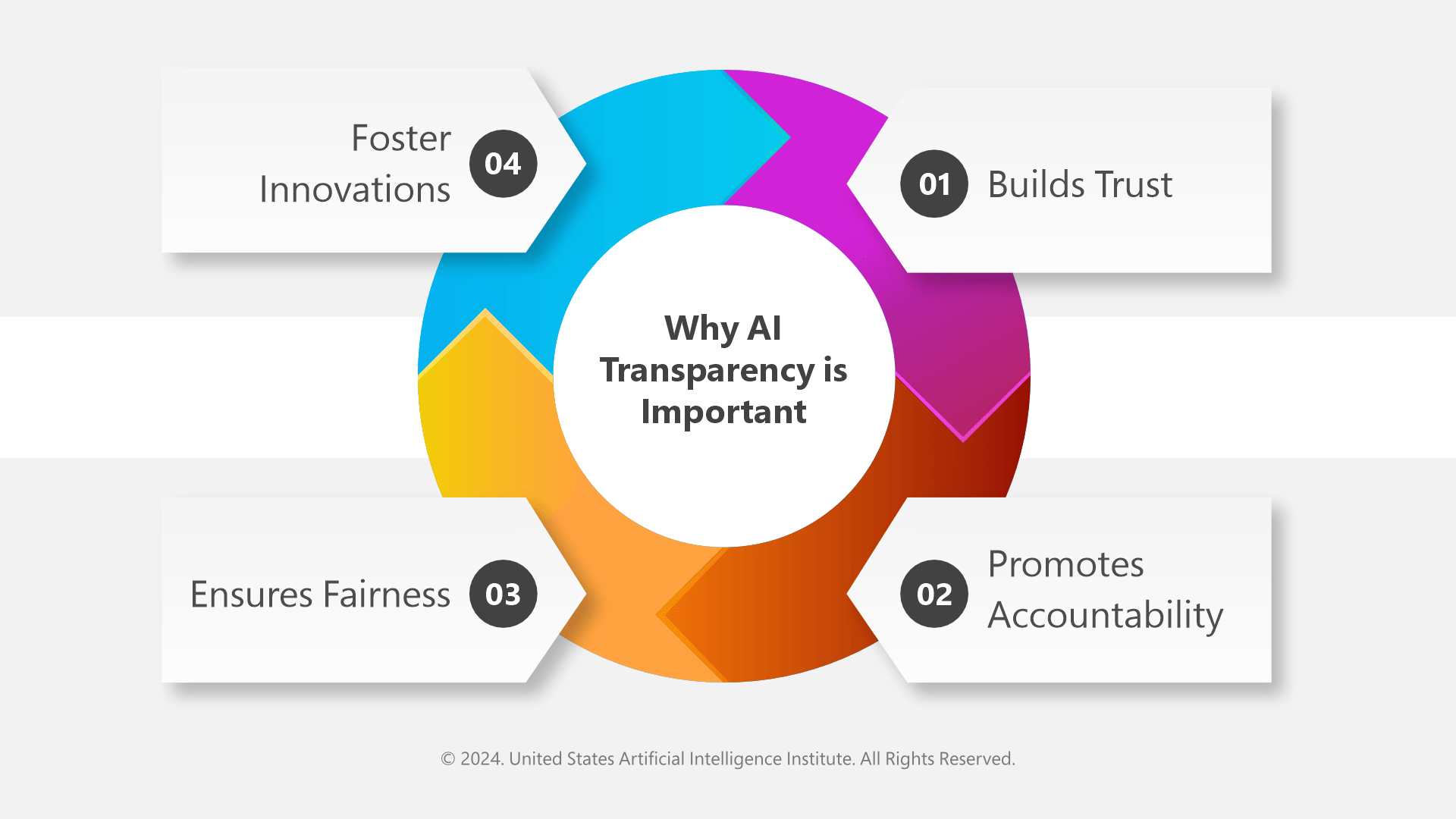
Looking at the criticality of the AI transparency implications; the role becomes even more important. From fostering innovation to building trust among the company and consumers, promoting accountability on the part of the company, and ensuring fairness are some of the many benefits that you as an adopter of the AI transparency regime can enjoy!
3 Pillars of AI Transparency:
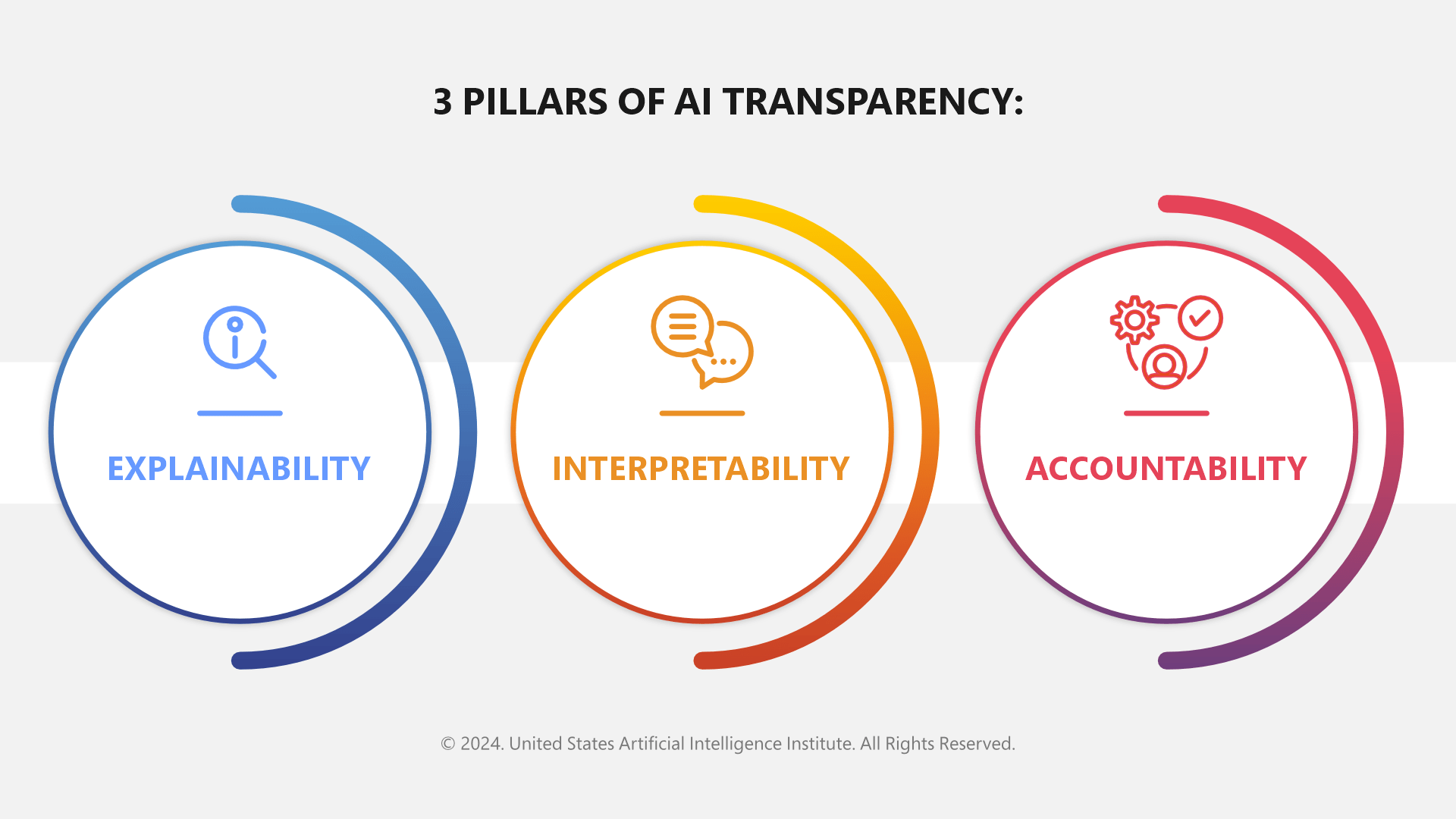
3 Levels of AI Transparency:
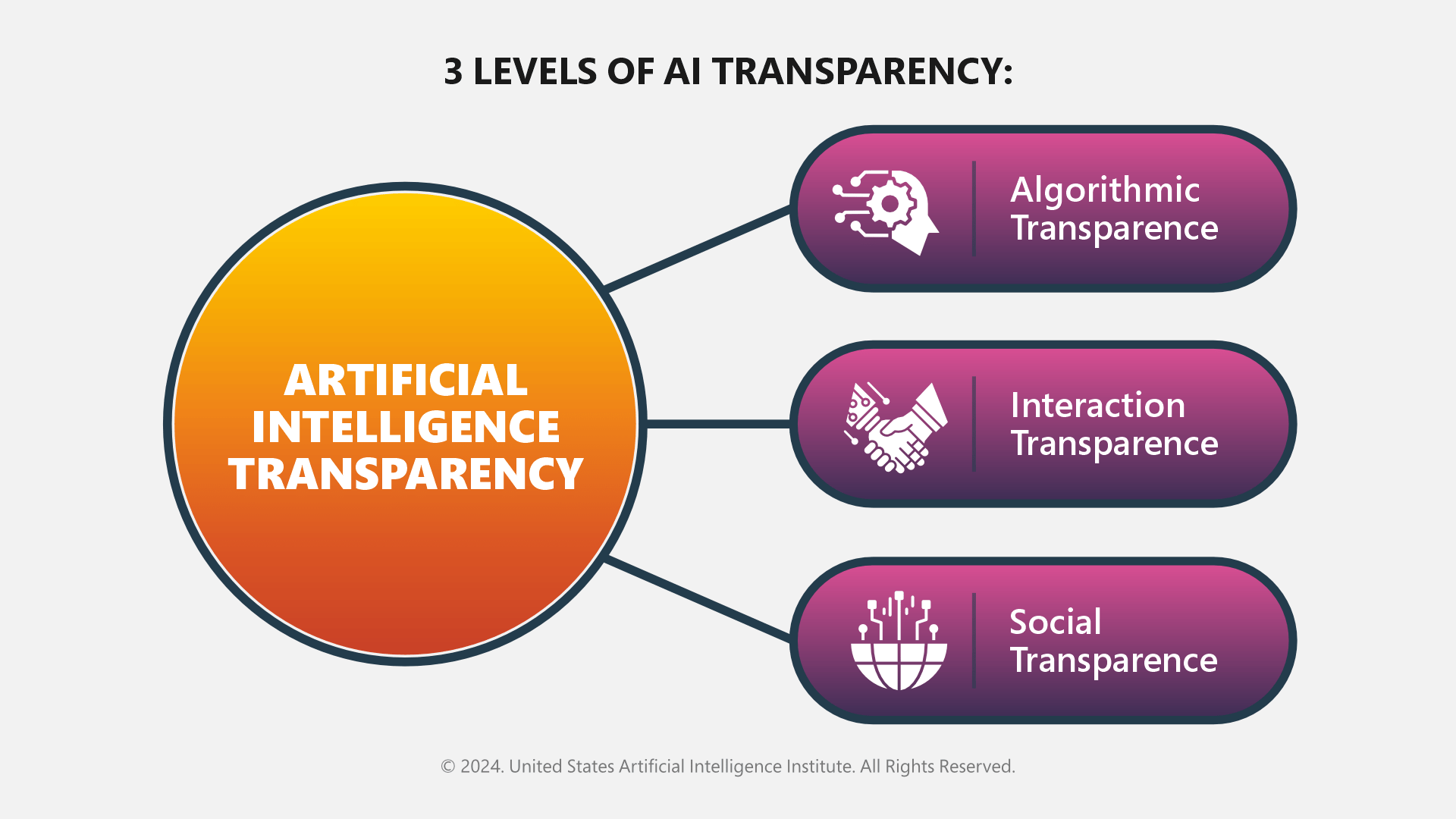
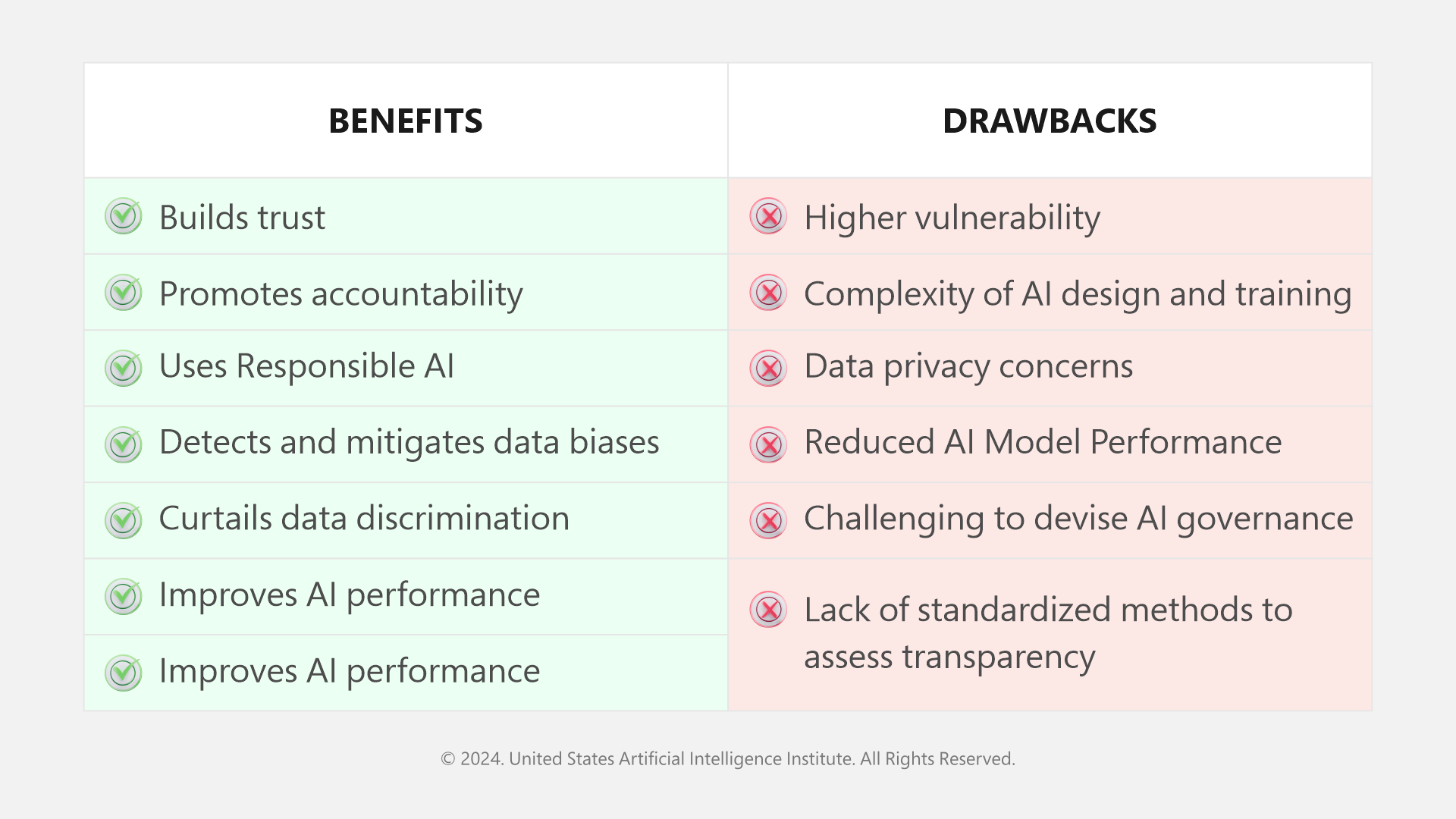
Best Practices in AI Transparency:
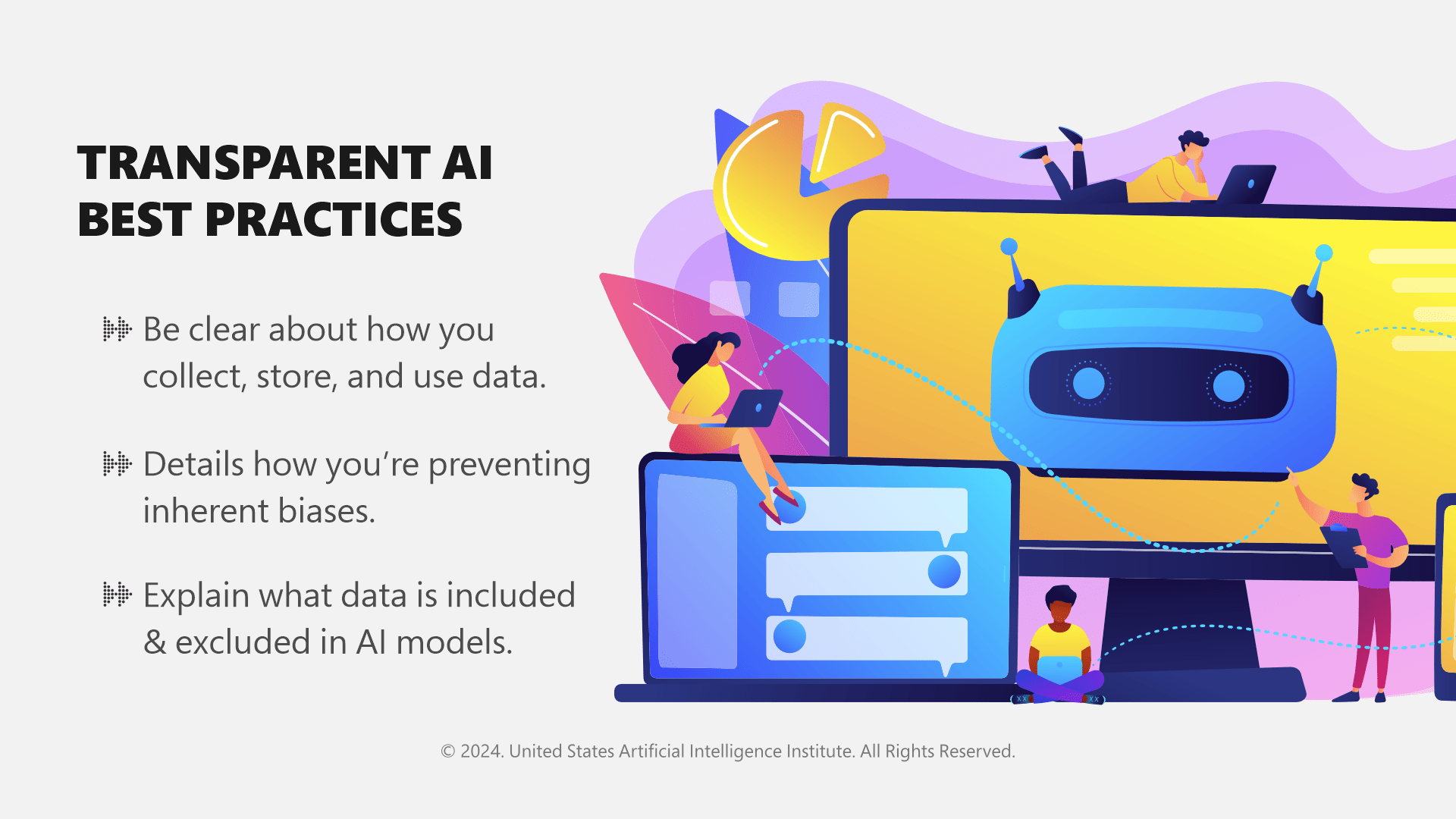
Protecting customer privacy starts with obtaining explicit consent from users before collecting or using their data for AI purposes. Explaining commitment to consumer transparency is a big hit when structuring AI transparency systems. This is why building a robust AI transparency mechanism on the above-listed best practices shall reap astounding benefits for businesses as well as consumers in the long run.
Industrial Use Cases of AI Transparency Adoption:
OpenAI is one big example of AI transparency among many others. this AI research laboratory is popular for its generative AI applications Chat GPT and Dall-E; which regularly publishes research papers and findings that provide key insights into its AI developments and breakthroughs. OpenAI is one such organization that is transparent about its goals, ethical guidelines, and the potential societal implications of Artificial intelligence through comprehensive documentation. The company encourages collaboration and engagement at a massive scale to foster knowledge sharing in the AI development domain.
What’s New?
The evolutionary habit of artificial intelligence has been shared by AI transparency as well. However, quite tricky to predict; several trends and expectations can guarantee a splurge in the AI transformation. Skilled AI scientists with core expertise gained at the most trusted AI certification programs can enable enhanced results in AI transparency and leverage higher business gains. Greater emphasis shall be on AI regulations and ethical considerations; making it easier for businesses to implement standardized AI practices, and address biases, and privacy concerns with responsible AI systems.
Follow us: